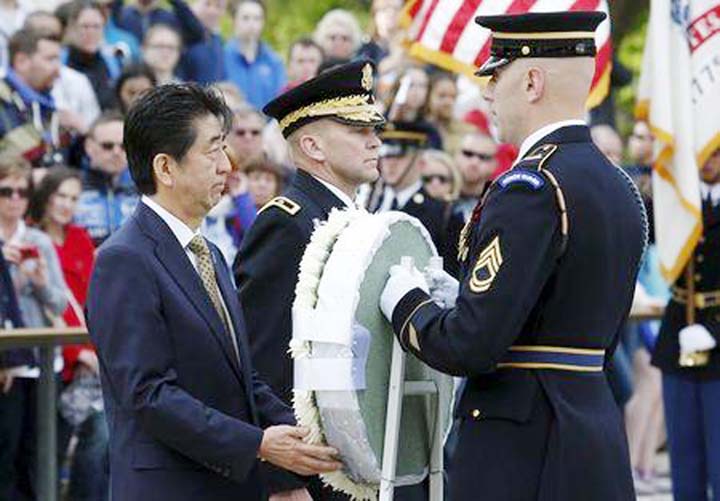
AFP, New York :
The United States and Japan unveiled new rules for defence cooperation in a historic move that will give Japanese forces a wider global role amid concerns over China’s rising sway.
Under the revised guidelines, Japan could come to the aid of US forces threatened by a third country or, for example, deploy minesweeper ships to a mission in the Middle East.
US Secretary of State John Kerry and Defense Secretary Ashton Carter revealed the new rules alongside Japanese Foreign Minister Fumio Kishida and Defense Minister Gen Nakatani after talks at a New York hotel.
Although officials said the new doctrine is not aimed at China, there has been increasing concern over moves by Beijing to try to scoop up disputed areas of the South China and East China Seas. But they pointedly made mention of North Korea as another source of tension in the region.
Kerry stressed the United States saw the disputed Senkaku Islands, known in Chinese as the Diaoyus, as firmly under Japan’s control.
Washington “commitment to Japan’s security remains ironclad and covers all territories under Japan’s administration, including the Senkaku Islands,” Kerry said.
The sovereignty of the isles has been a source of friction between Tokyo and Beijing for decades. The top US diplomat said the new guidelines would make Japan safer, and bring greater stability to the Asia-Pacific region.
“Today we mark the establishment of Japan’s capacity to defend not just its own territory, but also the United States and other partners as needed,” Kerry told a joint press conference. “This is a historic meeting. It’s a historic transition in the defense relationship between our two countries.”
The guidelines came a day before US President Barack Obama rolls out the red carpet at the White House for Japanese Prime Minister Shinzo Abe.
Nakatani said that since 1997, when the defense ties were last revised, “the security environment in the United States and Japan has changed dramatically.”
Meanwhile, President Barack Obama will host Japanese Prime Minister Shinzo Abe for White House talks on Tuesday to showcase newly strengthened defense ties and advance a long-delayed Pacific trade deal as the two allies seek to counter China’s rising influence in Asia.
But as Abe tries to focus on the future amid the ceremonial pomp of his official visit to Washington, the conservative leader is expected to be dogged by critics’ questions about how he is handling his country’s wartime past.
The official agenda is intended to highlight how times have changed for the former bitter World War Two enemies – even though some sticking points remain.
When Obama and Abe meet, they will put their stamp on new guidelines for defense cooperation, a sign of Japan’s readiness to take more responsibility for its security.
But while Japan moves to loosen restrictions on its post- war pacifist constitution, details are still to be worked out on how much leeway its military will have to assist U.S. forces beyond Japanese waters, especially in the tense South China Sea.

